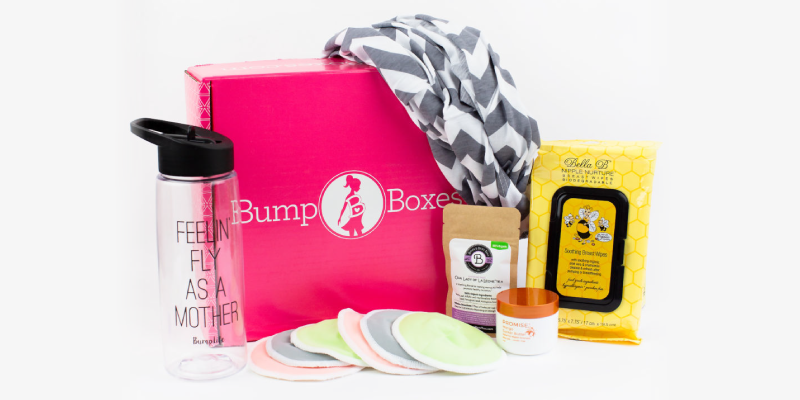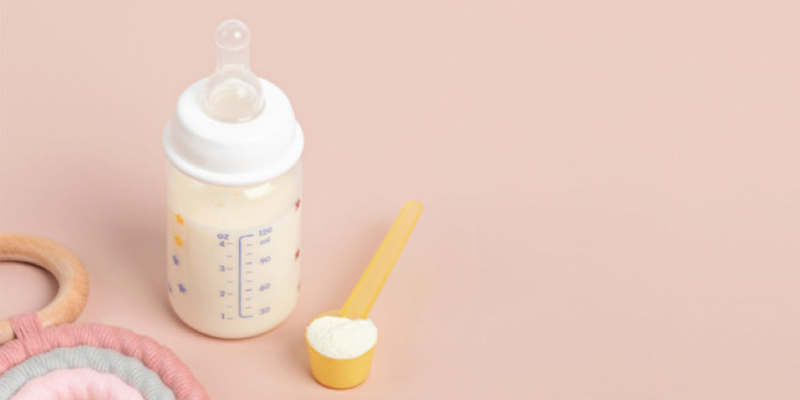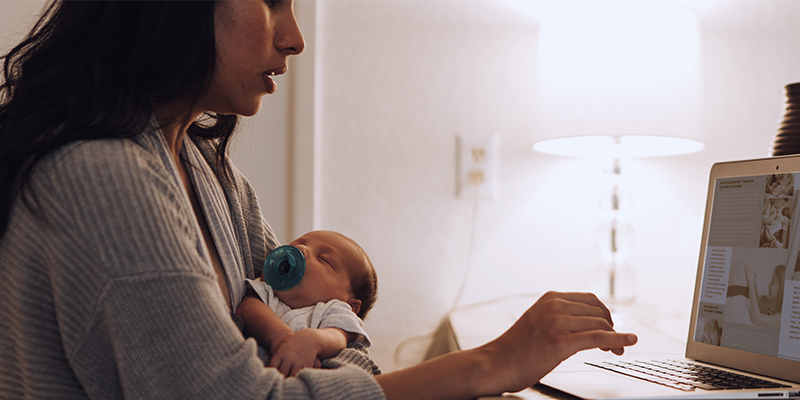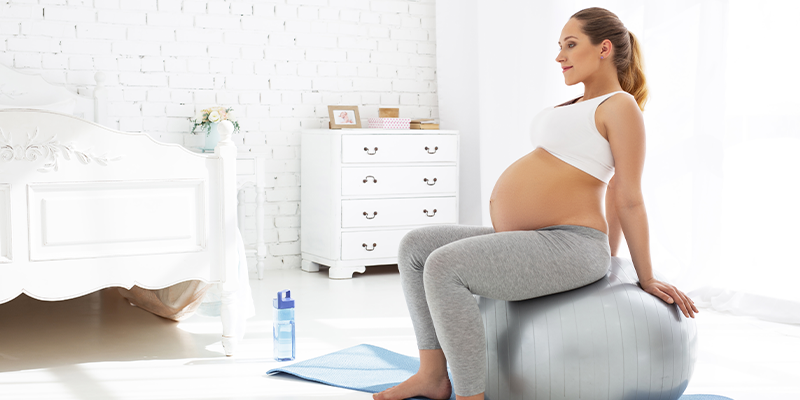Pelvic floor health during pregnancy: what you need to know
Ah, ye olde pelvic floor. We never give it much thought until we hear horror stories about moms who can’t laugh or jump on a trampoline with their kiddos without a little pee joining the party. But the truth is, your pelvic floor is an important little thing with the big job of supporting your bladder, uterus, and bowels. The muscles in your pelvic floor are also involved in peeing and sex, and they really show up for you during childbirth.
If you’re pregnant and feel like you’re walking around with a lead balloon in your belly, imagine how your pelvic floor feels. The muscles in your pelvic floor are basically in the middle of a 9-month weightlifting challenge, ‘cos they have the not-exactly-glamorous job of supporting your organs under the weight of your growing baby. And at the end of the weightlifting challenge, those muscles have to stretch and help you get that baby out.
It’s a tough job, but somebody’s gotta do it. And that somebody is your pelvic floor. No wonder so many women struggle with issues like incontinence and lower back pain after childbirth. Their pelvic floor is worn out + in need of some support itself.
But the good news is that if you prepare your pelvic floor by exercising it during pregnancy, you can prepare your body for labor and delivery (which means a safer birthing experience + a faster recovery) and avoid some of the common postpartum pelvic floor symptoms.
So, let’s talk about how you can support your pelvic floor and get it back in shape during pregnancy and after childbirth.
But first, the elephant in the room…
What if I’m going to have a C-section?
Yup, regardless of whether you deliver vaginally or have a C-section, your pelvic floor will be impacted by pregnancy. Remember, your pelvic floor stretches to make room for your growing baby and the weight of the baby may cause those muscles to become weak. So, even if you have a scheduled C-section, take care of that pelvic floor, mama! Now, onto how…
How do I improve the health of my pelvic floor?
There are several ways that you can work to improve the health of your pelvic floor during pregnancy.
Kelly Morales, OBGYN, shares the following ways you can protect your pelvic floor:
- Maintain healthy body weight and healthy weight gain during your pregnancy
- Avoid exercises and activities that exert excess pressure on your abdomen — especially during the second and third trimesters
- Give yourself time to rest and recover after exercise or exertion
- Engage in safe pelvic floor exercises to strengthen your muscles, such as pelvic tilts, bridges, and Kegel exercises
Kegels are crucial!
We’ve all heard the hype about Kegel exercises and how they’re supposed to keep things right and tight down there. The truth is that these exercises aren’t just good for what happens in the bedroom – they serve a greater purpose in aiding childbirth and improving postpartum recovery.
Healthline gives simple instructions for Kegel beginners:
- Empty your bladder prior to the exercise.
- Find a quiet, private place to sit or lie down.
- Tense the muscles in your pelvic floor (squeeze like you’re holding in pee) for a count of three then relax for a count of three.
- Keep going until you’ve done 10 repetitions.
- Over the next several days, practice until you can hold your muscles tense for a count of 10. Your goal should be to do three sets of 10 repetitions every day.
Pro tip from a new mom here at Bump: Get the NHS’s Squeezy app! You can choose how often you want to practice your pelvic floor exercises and you’ll get reminders + be visually guided through each exercise.
What is the perineum and what does it have to do with my pelvic floor?
The perineum is the space between your vaginal opening and your b-hole – it connects with the pelvic floor muscles. During childbirth, the perineum also stretches to make room for the baby, and sometimes, it can actually tear. Or, your doctor may cut your perineum in a procedure called an epistemology to prevent tearing.
(Quick aside: If you’re worried about tearing, don’t be! The majority of women experience at least some tearing during childbirth, but a tear actually heals much faster than a cut. And really, it’s not as bad as it sounds – speaking from experience here!)
The good news is that you can prepare your perineum for childbirth and hopefully prevent tearing and ease your postpartum recovery as well. How? With perineal massage.
Starting at about 34 weeks, you or your partner can begin massaging your perineum in order to stretch and soften it, which should improve your birthing experience. Perineal massage has the benefit of:
- helping you relax
- preparing the area for childbirth
- preventing burning and stinging (ayyyy, ring of fire)
- decreasing the risk of ongoing postpartum perineal pain
Ok, but how the hell do I massage my perineum?
To really benefit, you’ll need to get into the habit of massaging your perineum weekly. If you’re a 1 on the kink-scale, the idea of involving your partner may horrify you. But if not, we recommend having their help. Think of it as a way for them to support you in your pregnancy. At the very least, you’ll have a few laughs, and laughter is a stress-reliever, so it’ll be good for you both.
Don’t want your partner involved? No problem. Perineal massage doesn’t require two people. Here’s a step-by-step guide from Mater Mothers’ Hospital on what to do:
- Get clean. You or your partner (whoever’s doing the work) should wash those hands.
- Get comfortable. Try the massage laying in bed with pregnancy pillows or in the bathtub.
- Use natural oil or personal lubricants to make the massage more pleasant.
- Place thumbs just inside the vagina to a depth of three to five centimeters. Gently press downward towards the rectum and to the sides of the vagina at the same time to stretch the opening, until a very slight burning, stinging, or tingling sensation is felt. Burning and tingling will get better with time.
- Work the lubricant in slowly and gently, maintaining the pressure and pulling the perineum forward a little as you sweep your thumbs from side to side in the vagina in a ‘U’ shaped motion for approximately two to five minutes. The massage can be done in one direction at a time (i.e. side to side, or the thumbs can be swept in opposite directions).
- Try to relax as much as possible during the massage and keep breathing.
Prepare your body now for an easier childbirth + recovery
Let’s face it, labor and delivery can be scary to think about. But we want you to remember two things: First off, you can totally do this! Your body was made to give birth. You’ve got everything it takes and you’re gonna do great.
Second, by taking action now and doing your kegels and perineal massages, you’re setting yourself up for a smoother, easier delivery and recovery. So prioritize your pelvic floor health and prepare that perineum!

















